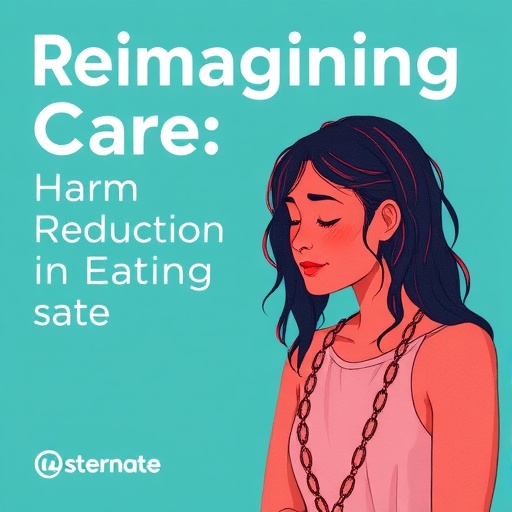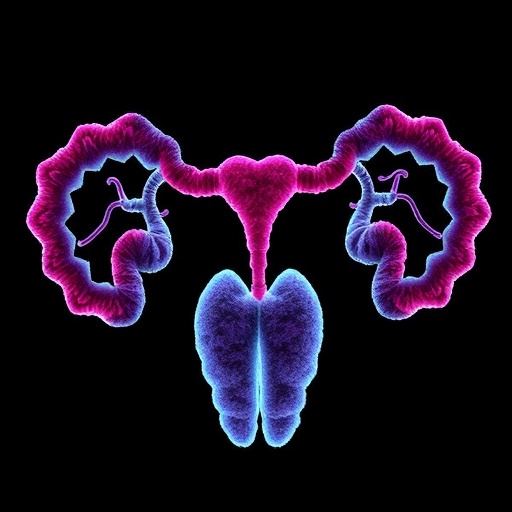In the evolving landscape of mental health treatment, the need for innovative approaches to care has never been more pressing, particularly in the domain of eating disorders. Recent studies, such as the one conducted by Gilmartin, Spiel, and Watson, delve into the integration of harm reduction strategies within traditional eating disorder treatment frameworks. This groundbreaking analysis, published in the Journal of Eating Disorders, shines a light on the potential for these methodologies to reshape our understanding and approach to care.
Eating disorders have long been viewed through a narrow lens, primarily focusing on restoration of weight and adherence to rigid behavioral models. However, this method often overlooks the complexities of a patient’s relationship with food and body image, which can exacerbate their condition. The traditional models, while beneficial in some cases, tend to be prescriptive and may inadvertently alienate those seeking help. A shift towards harm reduction could provide a more compassionate and flexible approach, accommodating the nuanced realities of individuals grappling with these disorders.
Harm reduction strategies prioritize the reduction of negative consequences associated with harmful behaviors, rather than insisting on complete cessation. In the context of eating disorders, this could mean allowing patients to engage with food in a less binary fashion—acknowledging that behaviors may fluctuate and change without the pressure of absolute compliance. This approach creates a safer space for individuals to explore their relationship with food, which can lead to incremental improvements in their mental and emotional well-being.
The results outlined in the recent content analysis reveal promising trends when harm reduction principles are applied within eating disorder treatment. Many participants reported feeling more in control and less stigmatized when offered strategies that recognized their complex feelings towards food. Over time, patients began to develop healthier coping mechanisms, demonstrating how adaptive skills could be fostered through this more empathetic care model.
Further, the study revealed insights into how healthcare providers perceived harm reduction strategies. While there remains resistance within certain circles—rooted in the fear of enabling harmful behavior—a growing number of practitioners are beginning to embrace the idea that flexible frameworks may encourage better long-term outcomes for their patients. This paradigm shift is crucial in fostering a more holistic approach to treatment that considers the emotional, psychological, and physical dimensions of eating disorders.
Another aspect of the research pointed to the importance of peer support and community engagement within harm reduction models. When individuals struggling with eating disorders feel connected to others who share similar experiences, they are more likely to engage openly in their treatment journeys. The sense of solidarity can build resilience and minimize feelings of isolation, which are common among those battling such disorders. Integrating peer support into harm reduction strategies could potentially enhance the efficacy of treatment plans.
Moreover, the study emphasizes the significance of personalized care. Individuals encountering eating disorders often possess unique histories and contexts, making a “one-size-fits-all” treatment approach inadequate. The flexibility inherent in harm reduction models allows providers to tailor interventions to the specific needs and realities of their patients. This individualization not only fosters better engagement but also nurtures the development of trust between patient and provider, which is essential for effective therapy.
The implications of integrating harm reduction into eating disorder treatment extend beyond immediate patient outcomes. By reshaping the narrative surrounding these disorders, we will ultimately influence how society views and discusses issues related to eating, body image, and mental health. Moreover, addressing eating disorders through a lens of harm reduction aligns with wider public health initiatives aimed at reducing stigma and encouraging open dialogues about mental health.
It is critical to highlight that harm reduction is not an all-encompassing solution but rather a complementary approach that can function alongside traditional methodologies. Therefore, a blended framework may emerge over time, merging the strengths of established medical practices with the compassionate, flexible strategies exemplified by harm reduction. By fostering collaboration among different treatment modalities, we can create a more comprehensive support system for individuals suffering from eating disorders.
As healthcare continues to evolve, the role of research in informing practices cannot be understated. The analysis by Gilmartin and colleagues serves as a vital reminder of the importance of robust data collection and evaluation in shaping medical approaches. Continued investigation into the effectiveness of harm reduction in various contexts will provide invaluable insights, further paving the way for future innovations in mental health care.
In conclusion, the findings derived from this recent examination may mark a pivotal moment in the treatment of eating disorders. By reassessing traditional approaches and integrating harm reduction strategies, we may finally be able to address the complexities inherent in these conditions. Such advancements not only enhance the well-being of individuals affected by eating disorders but also contribute to a healthier societal dialogue around food, body image, and mental health.
To implement these findings effectively in clinical practice, training for healthcare providers will be essential. They must be equipped with the knowledge and skills necessary to adopt a harm reduction approach thoughtfully. This will require a cultural shift within healthcare environments toward valuing empathy, flexibility, and personal connection, providing practitioners with the tools to support patients genuinely.
As society moves progressively towards a more nuanced understanding of mental health, the integration of innovative approaches like harm reduction in the treatment of eating disorders may signal a new era of compassionate care. This transformation is not only necessary but imperative if we are to meaningfully address and alleviate the suffering associated with these debilitating conditions.
In summary, the research conducted by Gilmartin, Spiel, and Watson offers a hopeful perspective on the potential of harm reduction strategies in transforming eating disorder care. By embracing this paradigm, we can pave the way for a more holistic, compassionate, and effective approach to treatment that acknowledges and respects the complexity of human experience.
Subject of Research: Harm reduction in eating disorder care.
Article Title: Beyond traditional models: a content analysis exploring the applicability of harm reduction in eating disorder care.
Article References:
Gilmartin, T., Spiel, E., Watson, J. et al. Beyond traditional models: a content analysis exploring the applicability of harm reduction in eating disorder care.
J Eat Disord 13, 251 (2025). https://doi.org/10.1186/s40337-025-01426-4
Image Credits: AI Generated
DOI: https://doi.org/10.1186/s40337-025-01426-4
Keywords: Harm reduction, eating disorders, mental health, treatment innovation, personalized care, peer support, stigma reduction.
Tags: compassionate care in eating disorderscomplexities of food and body imageflexible treatment methodologies for eating disordersharm reduction strategies in eating disorder treatmentinnovative approaches to mental health careintegration of harm reduction in therapypatient-centered approaches in mental healthredefining care in mental health contextsreducing negative consequences in eating disorderstraditional eating disorder treatment frameworksunderstanding eating disorder behaviorsweight restoration vs. holistic care





